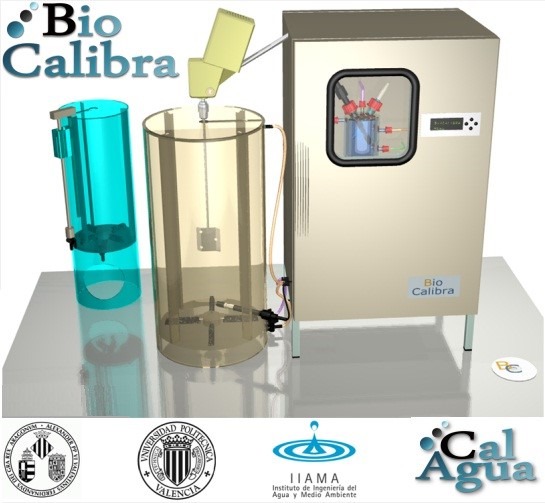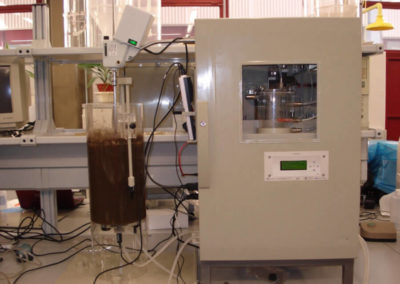Device for the calibration of activated sludge models: BioCalibra

Description
Characteristics
Images
Description
BioCalibra is an automated calibration device developed by CALAGUA that allows quantifying the kinetic and stoichiometric parameters of the WWTP simulation models most accepted by the scientific community.
BioCalibra allows to perform in a highly automated way, the tests necessary for the calibration of the parameters of greater influence of the activated sludge models. In addition, it allows to carry out a great diversity of experiments designed to evaluate the biological process, such as: determination of the biodegradability of the wastewater, verification of the existence of toxic compounds and determination of possible interferences or potential impacts on the treatment processes.
BioCalibra allows to optimize the calibration process, reducing both the analysis time, as well as, the human and technical resources required for its application.
Characteristics
The elements that make up the Calibration Device are mainly a reactor, a magnetic stirrer, an oxygen probe, an activated sludge storage tank under endogenous conditions, a metering hydraulic cylinder, a peristaltic pump, solenoid valves and a controller card. In addition, it includes calibration software for test control and data acquisition, in which a powerful optimization tool has been implemented. This tool allows to obtain the optimum set of the most important parameters of the model of activated sludge with the minimum experimental effort.
All elements are governed by the calibration software, which can be installed on any conventional personal computer. Through this software, the computer controls the different phases of each test and, through the implemented optimization algorithm, registers the necessary information to carry out the calibration of the characteristic parameters of an activated fan.
Respirators that currently exist on the market are limited to measuring the oxygen consumption of the biomass for the degradation of an amount of substrate added to the reactor at the beginning of the experiment. These devices are used for calibration of highly simplified models that are no longer useful for the increasingly complex WWTP, which includes the elimination of nitrogen and phosphorus. Thus, most of the parameters involved in activated sludge models with the removal of nitrogen and phosphorus can not be calibrated with these devices, which, on the other hand, require expert knowledge for the proper interpretation of the results.
In contrast, the Calibration Device developed by the IIAMA allows the calibration of the most influential parameters in activated sludge models for the biological elimination of nitrogen and phosphorus from the wastewater by means of optimized selective experiments. With the values of the parameters obtained with this device, it is possible to simulate the operation of the calibrated WWTP by just adjusting the characteristics of the residual influent water.
In addition, its control software includes a tool for the optical design of the experiments, able to restructure the tests as the results are obtained, in a way that optimizes the costs of time and reagents. Finally, by adjusting the data obtained in the different experiments performed, the optimization algorithm implemented estimates the value of the parameters.





